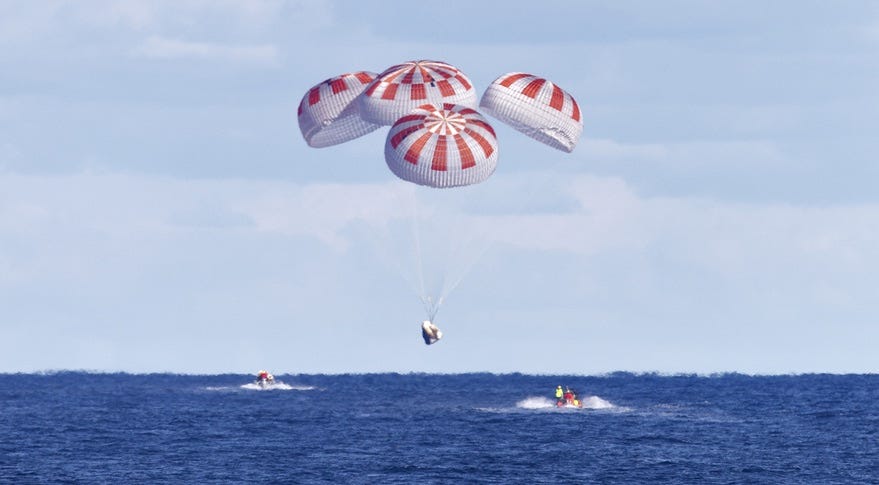
An area in the Gulf of Mexico just offshore from Pensacola is the primary landing site Sunday for the return of the first U.S. astronauts to launch from American soil since 2011.
NASA Administrator Jim Bridenstine announced via Twitter Saturday afternoon that the SpaceX Crew Dragon spacecraft would be targeting Pensacola as its primary landing site for Sunday afternoon.
Astronauts Bob Behnken and Doug Hurley will board the SpaceX Dragon and are scheduled to undock from the International Space Station at 6:34 p.m.
NASA and SpaceX are monitoring weather impacts from Hurricane Isaias which is why the site near Penscacola was selected as the primary landing location, according to a NASA press release.
"So not intuitive, but Isaias may actually help make nice weather on landing a few hundred miles west," Zebulon Scoville, NASA’s flight director, wrote on Twitter on Saturday morning.
A location near Panama City will serve as the back up location for splashdown for the Dragon spacecraft.
The mission, officially designated SpaceX Demo-2, was a demonstration flight of SpaceX's crewed Dragon spacecraft, and the return leg of the trip will mark the final stage in the more than 60-day flight to the International Space Station.
Behnken and Hurley launched from the Kennedy Space Center in May when a Falcon 9 rocket boosted the Dragon spacecraft into orbit 250 miles above the Earth.
If NASA and SpaceX give the return a go, the astronauts will undock from the space station and begin the process of returning to Earth.
What's at stake: As NASA astronauts prepare for SpaceX splashdown, the world holds its breath
The Dragon spacecraft will be traveling at more than 17,500 mph when in begins to enter the Earth's atmosphere, and will build up heat as high as 3,500 degrees. The re-entry heat creates a communications blackout between Earth and the spacecraft that will last approximately six minutes, according to NASA.
Once the spacecraft reaches 18,000 feet it will be traveling at 350 mph and it will deploy two drogue parachutes to slow it down further. At 6,000 feet it will be moving at 119 mph when it will deploy four main parachutes that will allow the spacecraft to splash down gently in the Gulf of Mexico.
NASA will be carrying live stream of the return trip beginning at 4:15 p.m. online.
"All my bags are packed, I'm ready to go," Behnken posted on Twitter Saturday from the ISS.
Jim Little can be reached at jwlittle@pnj.com and 850-208-9827.
tinyurlis.gdu.nuclck.ruulvis.netshrtco.de
مقالات مشابه
- شرکت صادرات و واردات کالاهای مختلف از جمله کاشی و سرامیک و ارائه دهنده خدمات ترانزیت و بارگیری دریایی و ریلی و ترخیص کالا برای کشورهای مختلف از جمله روسیه و کشورهای حوزه cis و سایر نقاط جهان - بازرگانی علی قانعی
- آموزش تایپ دهانگشتی - تایپ سریع - مکتبخونه
- حریق گسترده در یک انبار مواد شیمیایی
- ورودی RAs نگرانی در میان عدم قطعیت در مورد آینده سال تحصیلی
- معرفی بهترین سایت های خرید کتاب دانشگاهی برای دانشجویان و اساتید
- فرصتی برای اصلاحات جدید 100 واحد مهندسی شیمی عمده
- زمينه و هدف: حیوانات در تحقیقات و تدریس در دانشگاه UCLA
- Coronavirus: فلوریدا دادگاه عالی تاخیر منصفه تا جولای 2 به منظور کاهش خطر عفونت
- 2 پرسنل نیروی دریایی از NAS Pensacola مرگ در آلاباما سقوط هواپیما
- Where the hardest hit areas of Santa Rosa County are, and how much it could all cost